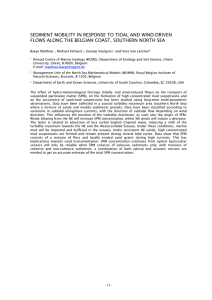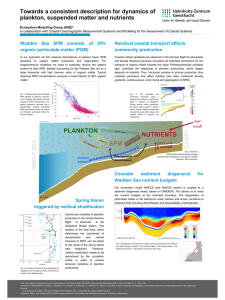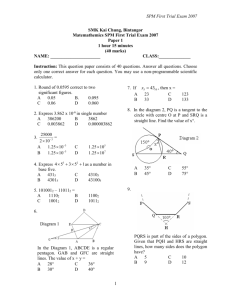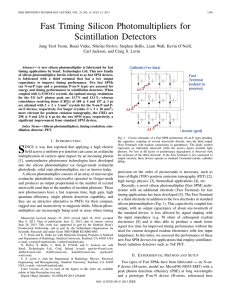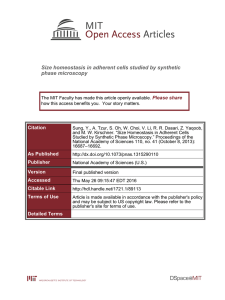On the impact of human activities on the SPM dynamics... Wadden Sea
advertisement
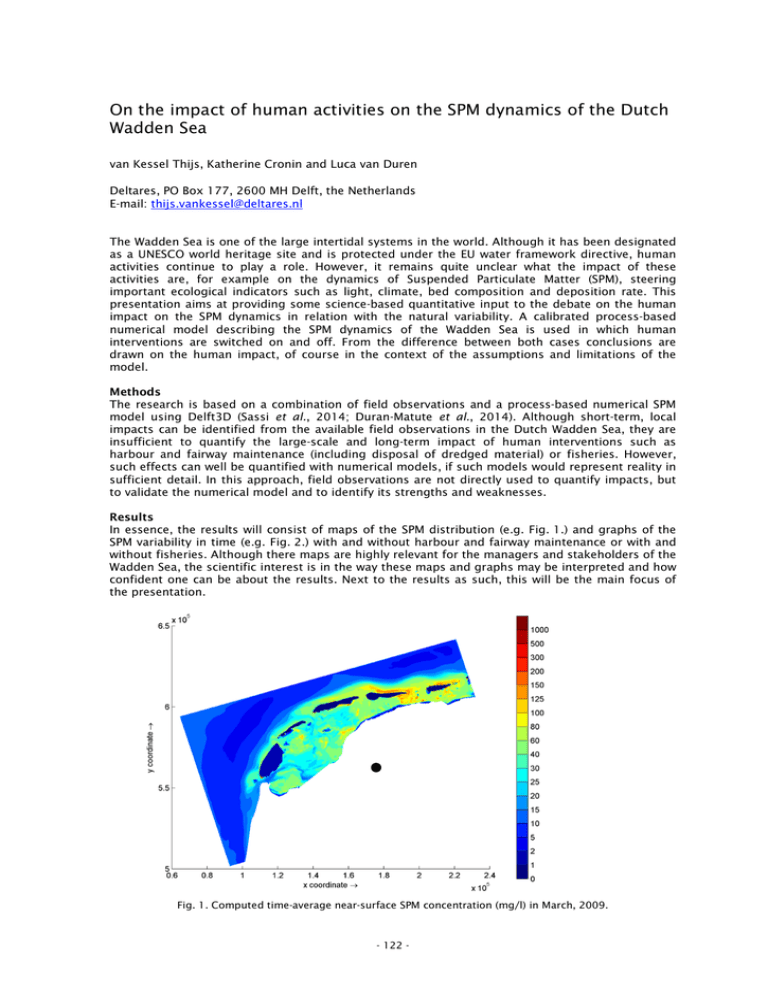
On the impact of human activities on the SPM dynamics of the Dutch Wadden Sea van Kessel Thijs, Katherine Cronin and Luca van Duren Deltares, PO Box 177, 2600 MH Delft, the Netherlands E-mail: thijs.vankessel@deltares.nl The Wadden Sea is one of the large intertidal systems in the world. Although it has been designated as a UNESCO world heritage site and is protected under the EU water framework directive, human activities continue to play a role. However, it remains quite unclear what the impact of these activities are, for example on the dynamics of Suspended Particulate Matter (SPM), steering important ecological indicators such as light, climate, bed composition and deposition rate. This presentation aims at providing some science-based quantitative input to the debate on the human impact on the SPM dynamics in relation with the natural variability. A calibrated process-based numerical model describing the SPM dynamics of the Wadden Sea is used in which human interventions are switched on and off. From the difference between both cases conclusions are drawn on the human impact, of course in the context of the assumptions and limitations of the model. Methods The research is based on a combination of field observations and a process-based numerical SPM model using Delft3D (Sassi et al., 2014; Duran-Matute et al., 2014). Although short-term, local impacts can be identified from the available field observations in the Dutch Wadden Sea, they are insufficient to quantify the large-scale and long-term impact of human interventions such as harbour and fairway maintenance (including disposal of dredged material) or fisheries. However, such effects can well be quantified with numerical models, if such models would represent reality in sufficient detail. In this approach, field observations are not directly used to quantify impacts, but to validate the numerical model and to identify its strengths and weaknesses. Results In essence, the results will consist of maps of the SPM distribution (e.g. Fig. 1.) and graphs of the SPM variability in time (e.g. Fig. 2.) with and without harbour and fairway maintenance or with and without fisheries. Although there maps are highly relevant for the managers and stakeholders of the Wadden Sea, the scientific interest is in the way these maps and graphs may be interpreted and how confident one can be about the results. Next to the results as such, this will be the main focus of the presentation. Fig. 1. Computed time-average near-surface SPM concentration (mg/l) in March, 2009. - 122 - Fig. 2. Computed (lines) and observed (dots) near-bottom SPM concentration (mg/l) at two levels above the bed at station Boontjes Noord (indicated in Fig. 1. with a black dot). References Duran-Matute M., T. Gerkema, G.J. de Boer, J.J. Nauw and U. Gräwe. 2014. Residual circulation and freshwater transport in the Dutch Wadden Sea: a numerical modelling study. Ocean Sci. 10:611632. Sassi M.G., M. Duran-Matute, T. Gerkema, T. van Kessel , U. Gräwe, G.J. de Boer and K. Cronin. 2014. Subtidal variability of suspended sediment transport in a multiple tidal-inlet system: a modelling study. Proc. 17th Physics of Estuaries and Coastal Seas (PECS) conference, Porto de Galinhas, Pernambuco, Brazil, 19–24 October 2014. - 123 -




